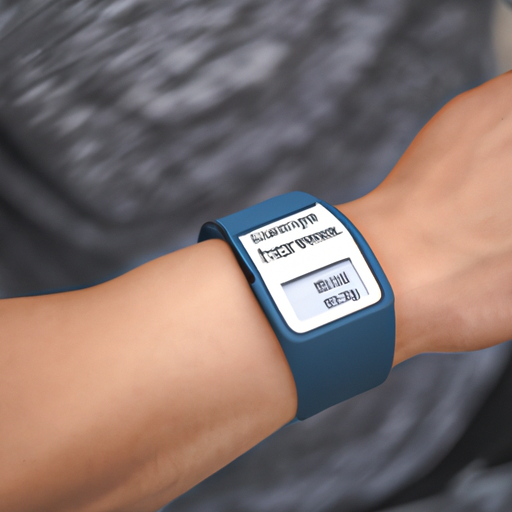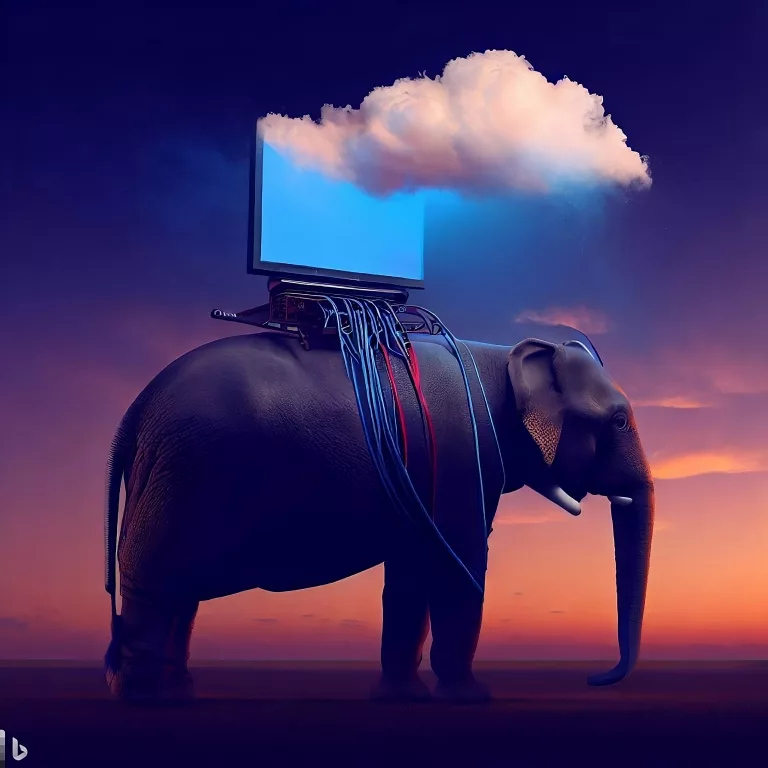Introduction
Wearable technology has come a long way since its humble beginnings in the 1960s, when devices like the first wrist-worn calculator watch emerged. Over the years, we have witnessed significant advancements in wearable technology, making it an integral part of our daily lives. Today, wearables have evolved from simple step counters to complex devices that can measure various physiological parameters.
The rise in popularity of wearable technology among researchers can be attributed to several factors. Firstly, wearables offer unparalleled access to real-time data collection on a wide range of variables. This allows researchers to obtain accurate and reliable data while minimizing the impact on participants’ daily routines. Furthermore, wearable devices have become increasingly affordable and accessible, making them an attractive choice for researchers with limited budgets.
Wearable technology has revolutionized experimental data collection by providing real-time monitoring of various physiological parameters. With continuous access to accurate and detailed information, researchers can now better understand complex biological processes and make more informed decisions about their studies.
Increased participant compliance and engagement
Another advantage of using wearables in scientific research is the potential for increased participant compliance and engagement. Since wearable devices are non-invasive and unobtrusive, participants are more likely to adhere to study protocols compared to traditional methods that may require frequent visits to research facilities or invasive procedures.
Long-term tracking and continuous data collection
One of the most significant benefits of wearables is their ability to track individuals over extended periods continuously. This long-term tracking capability opens new avenues for research that were previously impossible or impractical due to logistical challenges associated with traditional data collection methods.
Popular Wearable Devices for Scientific Research
Several popular wearable devices are frequently used in scientific research today:
- Fitbit: Known primarily for its fitness trackers, Fitbit offers a wide range of products with different features such as heart rate monitoring, sleep tracking, GPS tracking, and more.
- Apple Watch: As one of the most recognizable smartwatches globally, the Apple Watch boasts a plethora of features useful for research purposes including heart rate monitoring, accelerometer data, sleep tracking capabilities (with third-party apps), GPS tracking, and more.
- Garmin devices: Garmin’s line-up includes fitness trackers as well as advanced sports watches that offer features like heart rate monitoring (including HRV), GPS tracking, sleep analysis (with select models), activity detection (cycling/swimming/running), etc.
- Other popular wearables used in research include Oura Ring (for sleep studies) or BioStrap (for biometric analysis).
The Impact of COVID-19 Pandemic on Wearable Remote Monitoring Technologies
The COVID-19 pandemic accelerated the adoption of wearable remote monitoring technologies in scientific research and healthcare. With social distancing measures in place, researchers and healthcare providers turned to wearables as a means of remotely monitoring patients’ health without requiring in-person visits.
During the pandemic time, several companies developed wearable devices specifically designed for COVID-19 symptom tracking and early detection. These devices leveraged existing features like heart rate variability (HRV) analysis or respiratory rate monitoring to identify potential cases of infection. The widespread use of wearables during the pandemic has helped raise awareness about their potential in scientific research, paving the way for further innovation and adoption in other research areas.
Applications of Wearable Technology

Wearable technology has made significant contributions to health and medical research advancements by enabling continuous tracking of various physiological parameters. This data has been invaluable for studying chronic conditions such as diabetes, cardiovascular disease, and sleep disorders. As these devices become more sophisticated, their applications will continue to expand across various medical disciplines.
Personalized medicine and healthcare
The wealth of data generated by wearable devices can help create personalized medicine plans tailored to each individual’s unique needs. This approach enables healthcare providers to deliver more effective treatments based on real-time data rather than relying solely on standard protocols that may not suit every patient.
Sleep studies and mental health research
Wearables have also proven useful in sleep studies and mental health research by providing continuous tracking of sleep quality, duration, and other relevant metrics. This information can help researchers better understand the relationship between sleep patterns and mental health issues such as anxiety or depression.
Example wearable sleep sensors include:
- Biostrap EVO: Wearable health monitor that collects data during sleep to determine sleep stages and overnight recovery levels.
- Oura Ring: Features advanced sensors to measure heart rate, body temperature, heart rate variability, and movement for tracking sleep quality.
- Apple Watch Series 8 (and later): Tracks sleep cycles using sensors for heart rate, movement, breaths per minute, and skin temperature.
- Fitbit: Popular wearable devices that collect data on heart rate, heart rate variability, movement, breaths per minute, and skin temperature to track sleep cycles.
- Garmin: Wearables that monitor sleep quality by measuring heart rate, movement, breaths per minute, and skin temperature.
- Samsung: Wearables with sensors for tracking heart rate, movement, breaths per minute, and skin temperature during sleep.
- Eight Sleep’s Pod 3: Non-wearable sleep tracking device known for accuracy and reliability in monitoring sleep quality.
- Withings Sleep Analyzer: Under-mattress pad that monitors sleep patterns like respiration rate, heart rate, light/deep/REM sleep cycles, body movement, and interruptions.
- Whoop: Offers a wearable sleep tracker with insights into sleep quality by measuring heart rate, heart rate variability, and movement.
Environmental monitoring and citizen science initiatives
Wearables equipped with environmental sensors can contribute to environmental monitoring efforts by collecting real-time data on air quality, temperature, humidity, UV exposure, etc. By involving citizens in these data collection efforts through citizen science initiatives, researchers can obtain valuable insights into environmental factors impacting public health.
As an example, wearable sensors can be used to monitor various environmental factors such as noise levels, temperature, humidity, and light intensity. Citizens wearing these devices can collect data on their surrounding environment and contribute to research on the impact of these factors on human health and well-being
Sports science, human performance, and ergonomics
In sports science, wearable technology plays a critical role in understanding human performance by providing detailed data on athletes’ physical activity levels, biomechanics, fatigue levels, etc. This information is essential for optimizing training programs and preventing injuries. Additionally, wearables have been used for ergonomic assessments by analyzing workers’ movements to identify potential risks associated with repetitive tasks or poor posture.
Privacy concerns and data security issues
As wearable technology becomes increasingly integrated into scientific research efforts, privacy concerns surrounding personal data must be addressed carefully. Researchers must ensure that all collected data is securely stored while maintaining participants’ anonymity where necessary.<
Potential biases in data sampling or analysis
The use of wearables may inadvertently introduce biases into the study if certain groups are underrepresented due to factors such as socioeconomic status or accessibility barriers. Researchers must take steps to minimize these biases when designing their studies or analyzing the collected data.
Balancing user-friendliness with scientific rigor
To maintain participant compliance over extended periods while ensuring accurate data collection is crucial for researchers using wearables in their studies. Balancing user-friendliness with scientific rigor requires careful consideration when choosing appropriate devices or designing study protocols that are both engaging for participants yet reliable from a scientific standpoint.
Interdisciplinary Collaboration for Advanced Wearable Technology Development
The development of advanced wearable technology requires interdisciplinary collaboration among scientists from diverse fields such as engineering, computer science, biomedicine, psychology – just to name a few. By combining expertise from different disciplines through collaborative efforts within academia or industry partnerships (e.g., between tech companies & research institutions), we can accelerate innovation within this rapidly evolving field while addressing existing challenges more effectively.
User Experience (UX) Design for Participant Compliance with Wearables
Ensuring a positive user experience (UX) with wearable devices is crucial for maintaining participant compliance and engagement in research studies. This involves selecting devices with intuitive interfaces, comfortable designs, and minimal obtrusiveness. Furthermore, researchers should consider providing clear instructions and support to participants on how to use the wearables effectively.
Inclusivity in Research Design when Using Wearables
When designing research studies involving wearables, it is essential to ensure inclusivity by considering factors such as age, gender, cultural background, and socioeconomic status. These considerations can help prevent potential biases from arising due to underrepresentation of certain groups within the study population.
Standardization Challenges within the Industry
One significant challenge facing the wearable technology industry is the lack of standardization in terms of device functionality, data formats, and protocols for sharing information between devices or platforms. The wearable technology industry is addressing challenges through:
- Technical Standards Development: Industry groups and standards bodies, like the IEEE P360 and the Consumer Technology Association (CTA), create frameworks for device manufacturers to ensure interoperability between devices and platforms.
- Healthcare Partnerships: Collaborations between industry organizations, healthcare organizations, and health data platform developers help bridge the gap between wearable technology and clinical standards by guiding communication of product capabilities and recommending appropriate devices to patients.
- Data Quality and Reporting Standards: Researchers are working on standardizing data collection and reporting from wearable devices to ensure consistency, reliability, and improved quality of data for medical research studies.
- Interoperability: Efforts focus on developing interoperability standards for seamless data sharing and integration between wearable devices and healthcare systems while addressing cybersecurity risks.
- Collaboration with Standards Development Organizations: Organizations like the Office of the National Coordinator for Health Information Technology (ONC) collaborate with experts to advance mobile health, sensor, and wearable data standards development, aligning wearable data with existing standards like HL7 Fast Healthcare Interoperability Resources (FHIR).
Integrating Multiple Data Sources for Comprehensive Understanding of Participants’ Behaviour
As more sophisticated wearable devices become available, researchers will need to develop strategies for integrating multiple data sources to gain a comprehensive understanding of participants’ behavior. This may involve combining data from wearables with other sources such as smartphone usage patterns or self-reported questionnaires.
Advancements in AI for Improving Data Analysis from Wearables
The application of artificial intelligence (AI) techniques can significantly improve data analysis from wearables by identifying patterns or trends that may not be readily apparent through traditional statistical methods. AI-driven algorithms can also enhance real-time data processing capabilities or aid in personalizing feedback based on individual users’ needs or preferences.
Implications of Widespread Adoption of Wearables on Public Policy-Making Decisions
The growing popularity of wearable devices can impact various aspects of public policy-making. Some key areas to consider include:
- Privacy and Security: Wearables collect personal data, so it’s important to protect the privacy and security of this information. Public policy should address data protection, consent, and data sharing to safeguard individual privacy rights.
- Regulation and Compliance: As wearables become more common, there may be a need for rules governing their use and promoting ethical practices. Public policy can help establish guidelines and standards for these devices, focusing on data ownership, transparency, and accountability.
- Consumer Protection: Public policy can ensure that wearable devices are safe and don’t pose risks to users. This includes addressing false advertising, product liability, and consumer rights related to wearables.
- Healthcare and Insurance: The use of wearables in healthcare and insurance industries can affect public policy. This may involve addressing data collection and usage in healthcare settings, reimbursement for wearable-based services, and integrating wearable data into healthcare systems.
- Workplace Regulations: As wearables become part of the workplace, public policy should tackle issues like employee privacy, data usage, and potential discrimination. Policies can help ensure that employers use wearables responsibly while respecting employee rights.
- Accessibility and Equity: Public policy needs to consider the accessibility and equity aspects of widespread wearable adoption. This includes addressing affordability, accessibility for people with disabilities, and bridging the digital divide so that wearable technology benefits everyone in society.
Conclusion
In conclusion, wearable technology has significantly transformed the landscape of scientific research, providing researchers with unprecedented access to real-time data, improved participant compliance, and long-term tracking capabilities. The rise of wearables in research spans across diverse disciplines such as health and medical research, personalized medicine, sleep studies, mental health research, environmental monitoring, sports science, and more. However, challenges such as privacy concerns, data security issues, potential biases in data sampling or analysis, and standardization need to be addressed diligently.
As we move forward into an era of rapid advancements in wearable technology and artificial intelligence integration, interdisciplinary collaboration becomes essential for the development of advanced devices that cater to researchers’ evolving needs. By considering user experience design principles and inclusivity in research design while integrating multiple data sources for comprehensive understanding of participants’ behavior, the potential impact of wearables on scientific research is immense. Policymakers must also stay informed about the implications of widespread adoption of wearables on public policy-making decisions.
Ultimately, embracing wearable technology in scientific research has far-reaching benefits that can drive innovation and lead to breakthroughs across various fields. Researchers must remain adaptable and open-minded when incorporating wearables into their studies while addressing existing challenges to maximize their potential for discovery and knowledge generation.
Next Steps
Round Table Environmental Informatics (RTEI) is a consulting firm that helps our clients to leverage digital technologies for environmental analytics. We offer free consultations to discuss how we at RTEI can help you.


